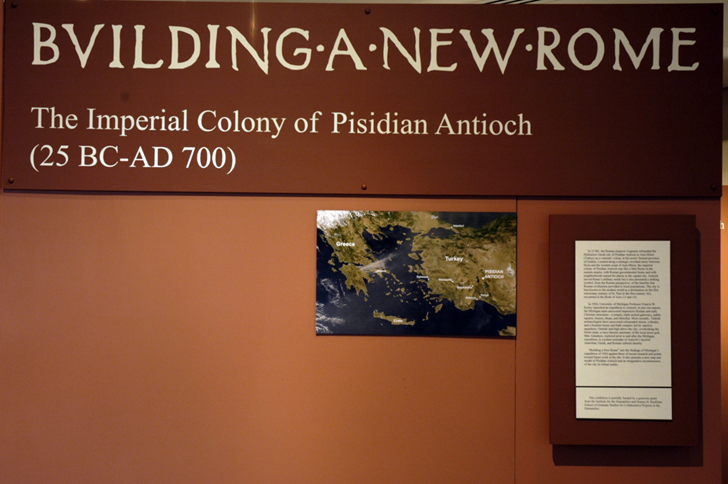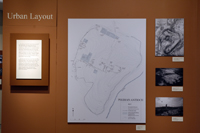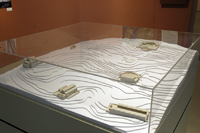
Duderstadt Gallery: Section 1 - Urban Plan
(Click on image in the large image below to view)

In 25 BC, the Roman emperor Augustus refounded the Hellenistic Greek city
of Pididian Antioch in Asia Minor (Turkey) as a veterans’ colony
in his newly formed province of Galatia. Located along a strategic overland
artery between Syria and the western coast of Asia Minor, the imperial
colony of Pisidian Antioch was like a little Rome in the eastern empire,
with Roman governmental forms and with neighborhoods named for places
in the capital city. Antioch served Rome’s military needs but it
also presented a striking symbol, from the Roman perspective, of the benefits
that Roman civilization provided to local populations. The city is best
known to the modern world as a destination on the first missionary journey
of St. Paul in the first century AD, recounted in the Book of Acts (13
and 14).
In 1924, University of Michigan Professor Francis W.
Kelsey launched an expedition to Antioch. In just one season, the Michigan
team uncovered impressive Roman and early Christian structures—a
temple, triple arched gateways, public squares, houses, shops, and churches.
More recently, Turkish archaeologists have uncovered colonnaded streets,
a theater, and a fountain house and bath complex fed by massive aqueducts.
Outside and high above the city, overlooking the fertile plain, a once-famous
sanctuary of the local moon god, Mên Askaênos, explored prior
to and after the Michigan expedition, is a potent reminder of Antioch’s
layered Anatolian, Greek, and Roman cultural identity.
“Building a New Rome” sets the findings of Michigan’s
expedition of 1924 against those of recent research and points toward
future work at the site. It also presents a new map and model of Pisidian
Antioch and an imaginative reconstruction of the city in virtual reality.
This exhibition is partially funded by a generous grant from the Institute for the Humanities and Horace H. Rackham School of Graduate Studies for Collaborative Projects in the Humanities.
February 18, 2006
Digital Image
Courtesy of J. Matthew Harrington



